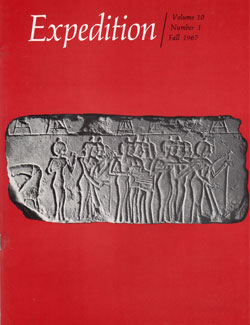
Almost all Egyptian gods and goddesses could take the form of an animal. Osiris, the god of the dead, never developed animal associations. That is because he symbolizes the idea of the mummified pharaoh. To the ancient Egyptians, Osiris was the first mummy in history and every person whose body was mummified was following in the steps of Osiris.
According to the Egyptian myths, Osiris was a divine pharaoh who was murdered by his jealous brother Seth. Osiris’ body had to be mummified by his wife, Isis, and the jackal-god Anubis. Thanks to his successful mummification, Osiris was able to be reborn, not in this life, but as the pharaoh of the netherworld. The desire to enter the realm of Osiris after death was one of the prevailing beliefs of Egyptian religion and as a result Osiris was one of the great gods venerated throughout Egyptian history. This statue shows his upper body wearing the White Crown and holding the crook and flail: emblems of kingship. The white garments are not clothing but represent the linen wrappings of a mummy.
This painted statue is part of a giant Osiris statue that once decorated a temple of king Ramses II at Abydos. In 1967 the Museum’s excavations at Abydos discovered this figure and it is among the last group objects to come to the Penn Museum from Egypt. Abydos was the holy city of Osiris and the place where the Egyptians believed Osiris himself was buried.
Many Egyptian pharaohs like Ramses II built temples honoring Osiris and connecting themselves with that important god. Ramses II who was one of the greatest temple builders in Egyptian history was not content with only one temple at Abydos. He built two temples there. This statue of Osiris belongs to a building called the “Portal Temple” which sat right next to the main temple of Osiris and beside a sacred road that led out into the desert to the tomb of Osiris.
Ramses II is well known for the gigantic scale of his temples. This figure of Osiris is typical of the soaring height of Ramses’ monuments. This head of Osiris would once have stood atop a 30-foot tall statue of the god. Other identical figures would have lined a colonnade.
Notice how the statue’s eyes are turned downwards towards the floor. Imagine the effect of a group of these powerful statues staring down at you as you entered the courtyard of the temple of Ramses the Great. You too would probably fall on your knees and begin praying to Osiris!
 Read more about Abydos in the Expedition article, Abydos–A Preliminary Report of the Pennsylvania-Yale Expedition, 1967 by David O’Connor.
Read more about Abydos in the Expedition article, Abydos–A Preliminary Report of the Pennsylvania-Yale Expedition, 1967 by David O’Connor.
Penn Museum Object #69-29-1.
See this and other objects like it on Penn Museum’s Collection Database.
